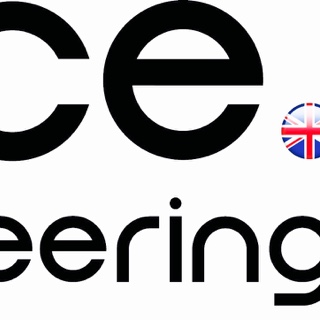Title Page
-
Site conducted
-
Site Name
-
Work Order
-
Conducted on
-
Prepared by
-
Location
-
Schedule Introduction
It is the responsibility of the contractor to be familiar with the latest legislation, regulations and standards relating to the works they are undertaking.
Please inform the relevant manager prior to undertaking these works.
Check with the relevant manager to establish all known issues with the display cabinets.
The method statement and accompanying risk assessment should be read, understood and implemented during this task.
Any maintenance carried out on the equipment should be in accordance with the manufacturers' recommendations.
Make sure that there is a safe system of works in place when undertaking this PPM.
Ensure you have read and understood the manufacturer’s recommendations, carried out risk assessment(s) on each item of plant to identify the correct frequency of maintenance, identified all safety procedures that need to be applied and recorded in order to carry out the work in a safe and reliable manner.
Notes:
THE ELECTRICAL SUPPLY TO THE EQUIPMENT MUST BE ISOLATED, IF REQUIRED, BEFORE CARRYING OUT ANY PPM CHECKS.
Equipment should be fit for purpose and left in a safe working order. Any repairs carried out should be reported to the duty manager.
Room
-
1. Check the integrity of the internal and external panels, floor, curtains, access ramps for damage, ice, frost and condensation.<br>2. Ensure Person Trap Alarm is serviceable.<br>3. Ensure the availability of an 'Axe' within the Room(s).<br>4. Check internal and external protective barriers for damage, security.<br>6. Check floor heater operation where applicable.<br>7. Check for evidence that the evaporators are discharging the condensate.<br>8. Check levelling shims for positioning and slip. 9. Check the operation of the pressure relief valves (if installed). This is to ensure they are free of ice and obstructions and if they impact ice build-up on any adjacent evaporators.<br>10. Verify that the probes/sensors are properly secured and not obscured.<br>11. Check the state of the drains: lagging, trace heating, blockages on evaporators and aspirator units where applicable. If issues are found, attach a picture(s) and note leakage.<br>12. Check light operation for permanent feed.
Door
-
1. Check the fit of the interior strip or swing door (PVC or insulated) for damage, missing strips, significant ice build-up, or hardware and accessories.<br>2. Check door seal for cracks or damage and has a tight seal with frame.<br>3. Check door bottom edge sweeper gasket for damage.<br>4. Check internal and external door signage is present and correct.<br>5. Check the legibility of the instruction plate for the release mechanism.<br>6. Check door operation including door ancillaries.<br>7. Check door contact switch for correct operation/mounting.<br>8. Check condition and cleanliness of door fabric for ice, frost, mould and condensation. 9. Check condition of door / frame heaters where applicable.<br>10. Check and inspect all mechanical moving parts (runners, rails, guides, springs), lubricate with food safe grease where applicable.<br>11. Check operation of the door/frame heaters where applicable.
REFR Plant
-
1. Review plant location (internal / external), packaged or individual systems for physical, mechanical or corrosion damage including debris, cleanliness, ventilation, lighting, access, unauthorised storage.<br>2. Verify LOTO and NoGo placard and panel labels are correct for function and operation (AGL only not used on GP).<br>3. Check the condition of the mechanical installation including piping, joints, and associated components for signs of leaks (oil), damage, excessive vibration, damaged mounts etc.<br>4. Check the condition of all insulation and associated vapor sealing.<br>5. Inspect the moisture indicator on sight glass. Following an adverse reading the refrigerant filter drier/core requires replacing. Replacement should continue only if there is low impact to the system, otherwise a FUWO is required and works to be scheduled. <br>6. Confirm coils and condensers are free from debris / obstruction.<br>7. Check the condition or the evaporator assembly and sub-components (guards, louvres, socks, straighteners etc).<br>8. Check the correct operation of the evaporator fans. 9. Check evaporator for excessive ice build-up throughout sides and fins.<br>10. Check for any signs of ice at the compressor (floodback).<br>11. Check that the terminal box covers are in place.<br>12. Check the operation of the crankcase heaters. 13. Ensure oil levels of compressors and receivers are correct.<br>14. Clean the condensers.<br>15. Verify that the oil is free of contaminants, perform an acid test and report findings. Following an adverse acid test change the oil and filter/oil strainer. Replacement should continue only if there is low impact to the system, otherwise a FUWO is required and works to be scheduled. 16. Clean the evaporator assembly and sub-components (guards, louvres, socks, straighteners etc).<br>17. Carry out a defrost on the evaporator fans.<br>18. Check evaporator traps, clean and test. Check condensate pump operation, replace / fit biotabs into evaporator tray, check trace heating where applicable. 19. Leak test using the appropriate leak detection method for the type of refrigerant.<br>20. Record system refrigerant and charge (kg) if known from commissioning data and/or nameplate.<br>21. Record ANY refrigerant added to the system in accordance with F Gas regulations and Amazon WO management process.
Controls
-
1. Confirm that a wiring/controls electrical schematic is on site and available for subsequent checks.<br>2. Check that panels are securely mounted, doors closed and locked and that no signs of external damage is present.<br>3. Check indicator bulbs/displays are working and not discoloured.<br>4. Verify that the temperature settings are as per design.<br>5. Check that the isolators are not damaged and have sufficient LOTO capability.<br>6. Test the panel isolator interlock system to ensure that the isolator is working properly with sufficient LOTO capability.<br>7. Record run time analysis and KwH usage from MP4000 controller interface (CRS Thermoking).
Health and Safety
-
1. Record any H&S concerns or issues and inform RJB line manager.
End Page
-
Any Evidence and Pictures - For Future Record
-
Manager Signature
-
Engineers Signature
-
Date & Time Completed
-
Engineers Comments









